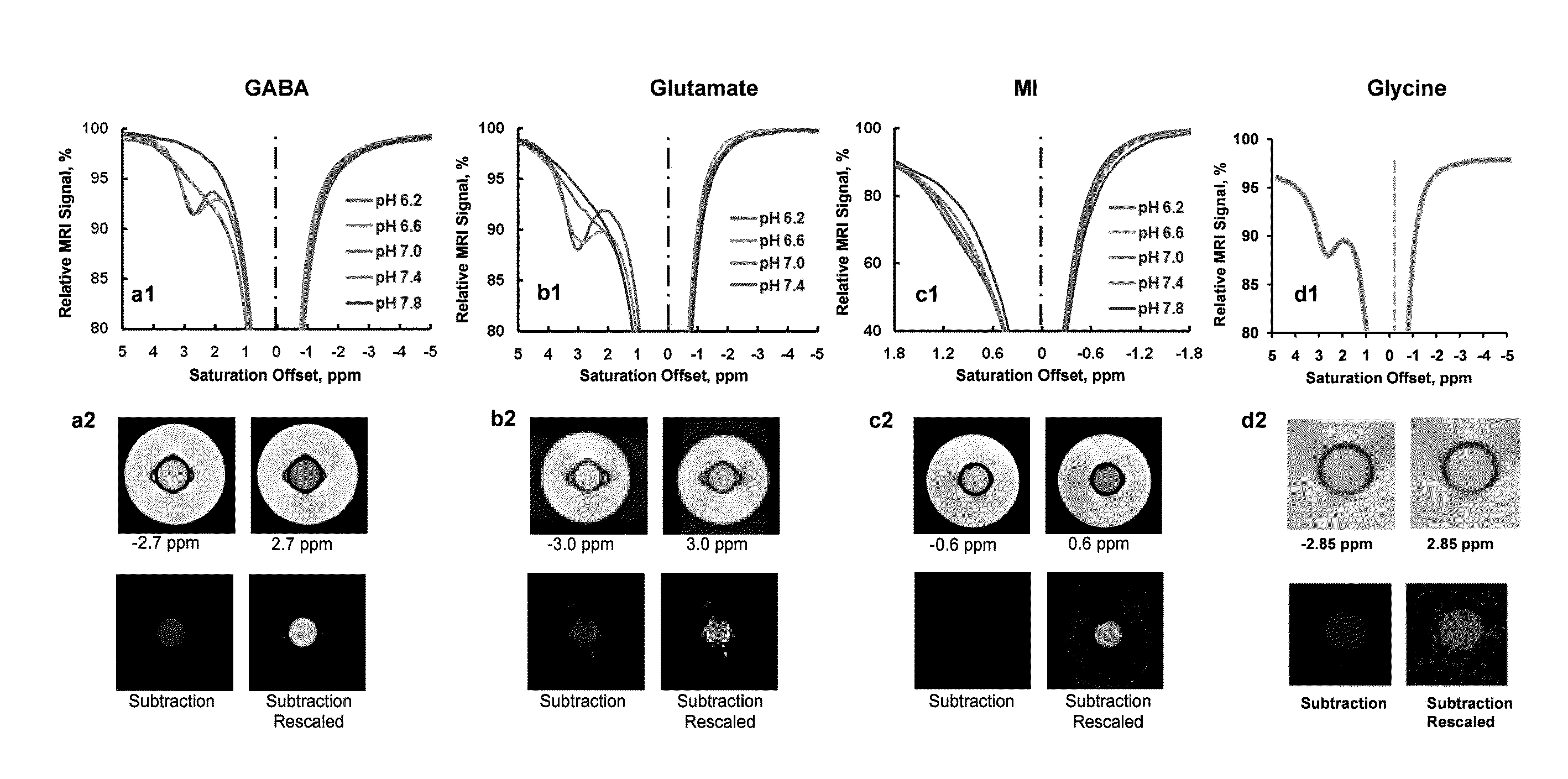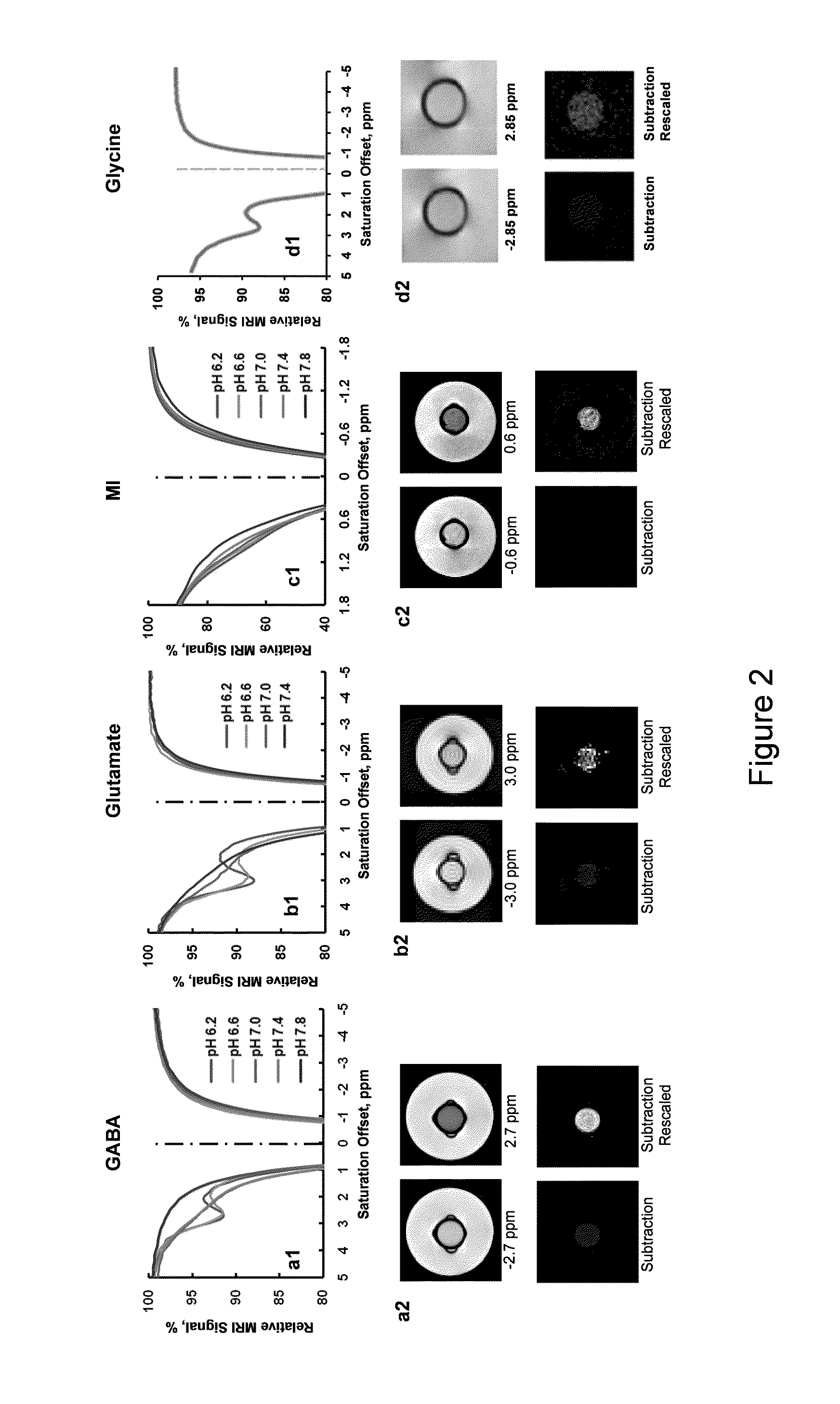Cest MRI methods for imaging of metabolites and the use of same as biomarkers
a metabolite and mri technology, applied in the field of metabolite mri imaging and the use of biomarkers, can solve the problems of inability to use a particular protein or peptide detection method, and the approach is riddled with technical difficulties, and achieves high spatial resolution and high specificity detection
- Summary
- Abstract
- Description
- Claims
- Application Information
AI Technical Summary
Benefits of technology
Problems solved by technology
Method used
Image
Examples
Embodiment Construction
[0054]Certain specific details are set forth in the following description with respect to FIGS. 1-31 to provide a thorough understanding of various embodiments of the invention. Certain well-known details are not set forth in the following disclosure, however, to avoid unnecessarily obscuring the various embodiments of the invention. Those of ordinary skill in the relevant art will understand that they can practice other embodiments of the invention without one or more of the details described below. Also, while various methods are described with reference to steps and sequences in the following disclosure, the description is intended to provide a clear implementation of embodiments of the invention, and the steps and sequences of steps should not be taken as required to practice the invention.
Basic CEST Pulse Sequence
[0055]The basic pulse sequence used in the CEST techniques described below comprises two building blocks: (1) a highly frequency selective variable duration saturation...
PUM
 Login to View More
Login to View More Abstract
Description
Claims
Application Information
 Login to View More
Login to View More - R&D
- Intellectual Property
- Life Sciences
- Materials
- Tech Scout
- Unparalleled Data Quality
- Higher Quality Content
- 60% Fewer Hallucinations
Browse by: Latest US Patents, China's latest patents, Technical Efficacy Thesaurus, Application Domain, Technology Topic, Popular Technical Reports.
© 2025 PatSnap. All rights reserved.Legal|Privacy policy|Modern Slavery Act Transparency Statement|Sitemap|About US| Contact US: help@patsnap.com



